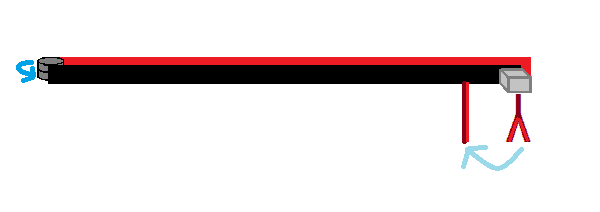Relic Arm
Tags: Mechanical, Design, and InnovatePersonhours: 10
Task: To have a working relic arm in time for Worlds
For weeks now, Team 6832 has been working hard to have a functional relic arm designed and mounted on the robot. We feel that it is absolutely necessary to be able to complete relic recovery at Worlds if we do not want to be crushed by the competition. Well, fear not, our relic arm is here!

Now, as you probably already know if you have seen our robot, Kraken is big and heavy. There’s not much space left to fit much of anything before different parts of the robot start interfering with each other. There is very little clearance left vertically and from the front to the back of the robot before we exceeded the 18 by 18 inch size limit.
Due to this, there was a bit of hesitance when it came to mounting the darn thing because it had seemed at first as if we would have to cut our beautiful side shields to be able to fit the relic arm onto the robot. However, we found a way around this.
First, I will briefly explain the design. There are two major components to the relic arm: the linear slide system and then the final metal bar that the “hand” of the relic arm is mounted on. The linear slide of the relic arm provides most of the extension length to the robot, and is what gets the “hand” across the walls of the field. A servo on the end of the linear slide system extends the final length of the arm, the part which grasps the relic. We felt that having this part at the end of the arm would give us more control when grabbing the relic, and help make it easier to balance the relic in endgame.
Anyway, because the final extension of the robot attached via a servo, this creates a distance between the two major components of the arm, which allowed us to fit the side shield in between the two. We still had to drill holes in the side shield, sadly, but this was much better than the alternative. We did not mount the arm directly by the slide system, of course. Instead, we attached another REV rail to the bottom of the slide system using double brackets, which created extra space for the side shield to fit in between the two components of the arm. Also, surprisingly enough, when we tested the grabber system, we found that despite the tight fit, the relic arm did not get in its way of the octopuckers when flipping upward or downward.
Where will we go from here?
Just because we finally have a relic arm does not mean we are done working on it. From now until Worlds, we will continue improving our relic recovery and tweaking the design of the arm along the way. We will have to fit time in for completing the challenge, but we have faith in our drive team!
